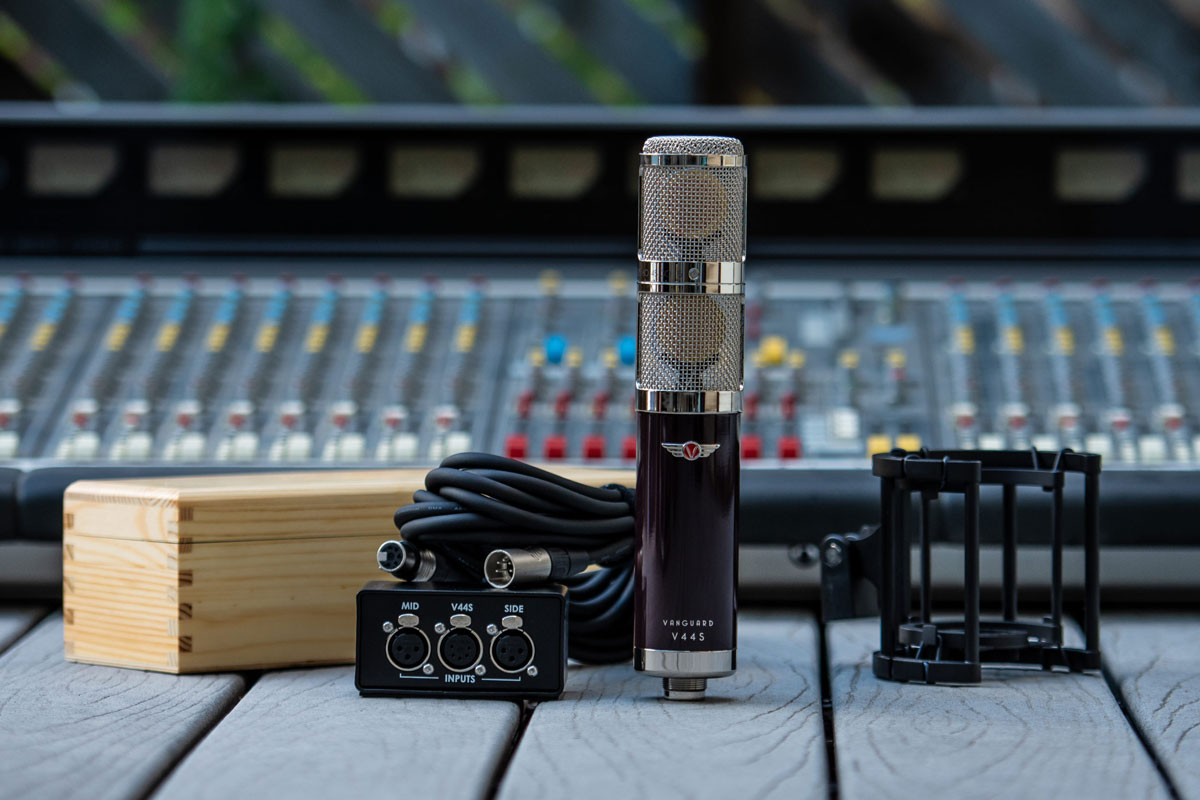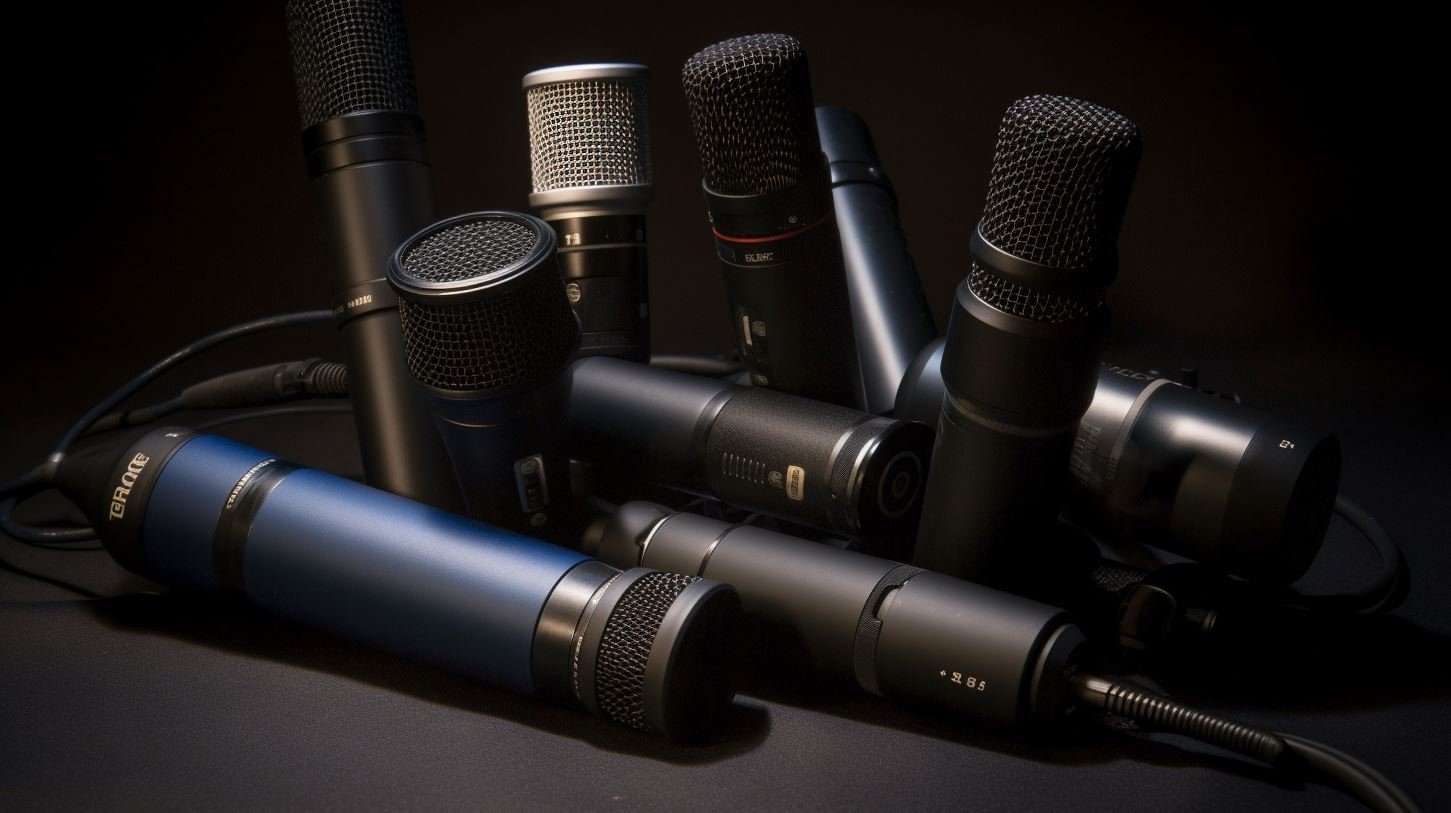Home>Devices & Equipment>Microphone>What Is AGC In Microphone Settings


Microphone
What Is AGC In Microphone Settings
Published: February 17, 2024
Learn about automatic gain control (AGC) in microphone settings and how it affects the performance of your microphone. Understand the impact of AGC on sound quality and how to adjust it for optimal microphone use.
(Many of the links in this article redirect to a specific reviewed product. Your purchase of these products through affiliate links helps to generate commission for AudioLover.com, at no extra cost. Learn more)
Table of Contents
Introduction
Welcome to the world of microphones, where precision and clarity are paramount. Whether you’re a professional sound engineer, a podcaster, a musician, or simply someone who appreciates high-quality audio, understanding the intricacies of microphone settings is crucial for achieving the best sound. One such setting that plays a significant role in shaping the audio output is Automatic Gain Control (AGC).
AGC is a feature found in many audio devices, including microphones, that automatically adjusts the gain to maintain a consistent level of sound output. While this may sound straightforward, the impact of AGC on audio quality and overall performance is a topic of debate among audio enthusiasts and professionals.
In this comprehensive guide, we’ll delve into the world of AGC in microphone settings, exploring its functionality, benefits, drawbacks, and best practices. By the end of this journey, you’ll have a solid understanding of AGC and its role in shaping the sonic landscape of your audio recordings.
Understanding AGC (Automatic Gain Control)
Automatic Gain Control (AGC) is a fundamental feature in audio processing that serves to regulate the amplitude of an audio signal. In the context of microphone settings, AGC dynamically adjusts the gain of the microphone to ensure that the output signal remains at a consistent level, regardless of variations in input volume. This can be particularly useful in environments where the sound levels fluctuate, such as live events, interviews, or outdoor recordings.
AGC operates by continuously monitoring the incoming audio signal and automatically adjusting the gain to prevent clipping (distortion caused by excessively high levels) and maintain an optimal signal-to-noise ratio. By doing so, AGC aims to strike a balance between capturing quiet sounds without amplifying background noise and preventing loud sounds from causing distortion.
One of the key principles behind AGC is its ability to adapt to changing sound levels in real time. This adaptive nature allows the microphone to handle a wide range of audio inputs, making it suitable for diverse recording scenarios. However, it’s important to note that AGC is not without its limitations, and its implementation can impact the overall audio quality and dynamic range, which we’ll explore in the following sections.
How AGC Works in Microphone Settings
When AGC is applied to microphone settings, it functions as a dynamic amplifier, continuously adjusting the gain to maintain a consistent output level. This process involves several key components and stages that collectively contribute to the functionality of AGC in microphone settings.
Firstly, the incoming audio signal is analyzed to determine its amplitude. This analysis is crucial for identifying variations in volume, whether they stem from the speaker’s proximity to the microphone, changes in vocal intensity, or fluctuations in ambient noise levels. Once the amplitude is assessed, the AGC circuitry comes into play, initiating gain adjustments to ensure that the output signal remains within a predetermined range.
AGC typically operates by amplifying the incoming signal when it’s below a certain threshold and attenuating it when it exceeds a specified level. This dynamic adjustment allows the microphone to capture a wide range of sound levels while maintaining a consistent output, thereby preventing quiet passages from being drowned out by louder segments and vice versa.
It’s important to highlight that the speed of AGC adaptation is a critical factor in its performance. A well-designed AGC system responds swiftly to changes in input volume, preventing abrupt shifts in gain that could compromise the audio quality. Additionally, the release time of AGC, which determines how quickly the gain returns to its normal level after a loud sound subsides, influences the overall sound character and perceived naturalness of the audio.
In digital microphones, AGC is often implemented through sophisticated signal processing algorithms that leverage digital signal processors (DSP) to analyze and manipulate the audio data in real time. This digital approach provides greater flexibility and precision in gain control, allowing for seamless integration of AGC with other audio processing functions.
Overall, the intricate interplay of signal analysis, gain adjustment, and adaptive processing forms the backbone of how AGC operates in microphone settings, shaping the audio output to meet the demands of diverse recording environments.
Pros and Cons of AGC in Microphone Settings
Automatic Gain Control (AGC) in microphone settings offers a range of benefits and drawbacks, each influencing its suitability for specific audio recording scenarios. Understanding the pros and cons of AGC is essential for making informed decisions regarding its implementation.
Pros:
- Consistent Output: AGC ensures a consistent audio level, compensating for variations in input volume and minimizing the need for manual gain adjustments during recording.
- Dynamic Adaptation: In environments with fluctuating sound levels, such as live events or field recordings, AGC allows the microphone to adapt to changing conditions, capturing both quiet and loud sounds without distortion.
- Clipping Prevention: By automatically adjusting the gain, AGC helps prevent signal clipping, which can occur when the input volume exceeds the microphone’s handling capacity, leading to distortion in the recorded audio.
- User-Friendly: For individuals with limited technical expertise in audio engineering, AGC offers a user-friendly solution for maintaining consistent audio levels without requiring extensive manual intervention.
Cons:
- Reduced Dynamic Range: AGC’s continuous gain adjustments can compress the dynamic range of the audio, potentially diminishing the contrast between soft and loud sounds, affecting the overall naturalness and expressiveness of the recording.
- Noise Amplification: In quiet passages, AGC may inadvertently amplify background noise, as it strives to maintain a consistent output level, resulting in a less pristine audio capture.
- Artificial Sound: The perceptible gain fluctuations introduced by AGC can impart an artificial quality to the audio, particularly in critical listening environments where transparency and fidelity are paramount.
- Challenges in Post-Processing: AGC may pose challenges during post-production, as the dynamic gain adjustments can affect the consistency and predictability of the recorded audio, complicating tasks such as equalization and dynamics processing.
While AGC offers valuable convenience and adaptability, its impact on audio quality and dynamic range must be carefully weighed against the specific requirements of each recording situation. By considering the trade-offs associated with AGC, audio professionals and enthusiasts can make informed choices to optimize the sonic outcomes of their recordings.
Best Practices for Using AGC in Microphone Settings
Effectively harnessing the potential of Automatic Gain Control (AGC) in microphone settings entails a nuanced approach that balances its advantages with careful considerations to mitigate potential drawbacks. By adhering to best practices, audio professionals and enthusiasts can optimize the performance of AGC while preserving the integrity of the recorded audio.
Set Reasonable Thresholds:
When configuring AGC, establish appropriate thresholds that align with the anticipated sound levels in the recording environment. Setting excessively aggressive thresholds can lead to noticeable gain modulation and compromise the naturalness of the audio, while overly conservative thresholds may limit AGC’s effectiveness in managing dynamic sound sources.
Monitor Noise Levels:
Be mindful of background noise when utilizing AGC, as it can be inadvertently amplified during quiet passages. Consider employing noise reduction techniques or utilizing microphones with low self-noise to mitigate the impact of AGC on ambient noise levels.
Utilize Quality Microphones:
Invest in high-quality microphones with wide dynamic ranges and low self-noise to complement the function of AGC. Superior microphones can provide greater headroom for dynamic sound capture, reducing the reliance on aggressive gain adjustments by the AGC circuitry.
Evaluate Post-Processing Considerations:
Acknowledge the potential implications of AGC on post-production tasks such as equalization and compression. If post-processing flexibility is a priority, consider alternative gain control methods or judiciously apply AGC to minimize its impact on subsequent audio treatments.
Test and Iterate:
Conduct thorough testing and iterative adjustments when implementing AGC in microphone settings. By listening critically to the recorded audio and making incremental refinements to the AGC parameters, you can tailor its operation to suit the specific acoustic characteristics of the recording environment and sound sources.
Consider Alternative Gain Control Methods:
Explore alternative gain control approaches, such as manual gain adjustment or the use of compressors with carefully configured settings, to achieve consistent audio levels without relying solely on AGC. This diversified approach can offer greater control over the audio dynamics and tonal characteristics.
By integrating these best practices into the utilization of AGC in microphone settings, audio practitioners can harness its benefits while mitigating its potential limitations, fostering a balanced and refined approach to audio capture and processing.
Conclusion
Automatic Gain Control (AGC) stands as a versatile tool in the realm of microphone settings, offering the convenience of dynamic gain adjustment to maintain consistent audio levels across diverse recording scenarios. Its ability to adapt to fluctuating sound levels and prevent signal clipping has made it a valuable asset for capturing high-quality audio in real-time environments.
However, the implementation of AGC necessitates a nuanced understanding of its impact on audio quality and dynamic range. While AGC streamlines the recording process and minimizes the need for manual gain adjustments, it introduces considerations related to noise amplification, dynamic range compression, and post-processing challenges that warrant careful attention.
By weighing the pros and cons of AGC and adhering to best practices, audio professionals and enthusiasts can leverage its benefits while mitigating its potential drawbacks. Setting reasonable thresholds, monitoring noise levels, and considering alternative gain control methods are essential strategies for optimizing the performance of AGC in microphone settings.
Ultimately, the effective utilization of AGC hinges on a balanced approach that prioritizes audio fidelity, adaptability, and post-processing flexibility. By integrating AGC judiciously and complementing it with high-quality microphones and meticulous testing, audio practitioners can achieve consistent audio levels while preserving the naturalness and integrity of their recordings.
As technology continues to evolve, the role of AGC in microphone settings will likely evolve as well, presenting new opportunities for refining its operation and enhancing its compatibility with diverse recording environments. By staying attuned to advancements in audio processing and maintaining a discerning approach to gain control, the audio community can continue to elevate the art and science of capturing pristine, immersive soundscapes.











